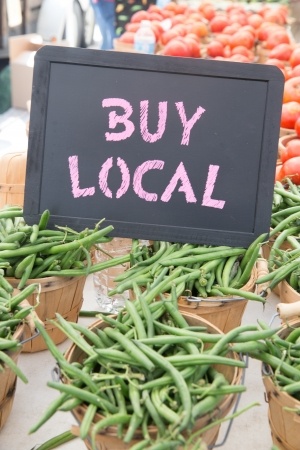Locally sourced food is the hottest food trend in the restaurant industry – and now it’s coming to a drive-thru near you.
In the most recent sign that "locally sourced” food has indeed gone mainstream, even fast-casual restaurants like Smashburger are marrying farm-to-table fresh food with favorite regional products. But does it mean that food service is headed towards menus that offer all local all the time?
The “locally grown” or “locally sourced” label is part of restaurateur’s push to tap into consumers’ desire for safe, fresh products that support local farmers. These products also tap into the American eco-consciousness as they have a smaller environmental footprint because they are not trucked as far.
The Start of the Farm-to-Table Movement
California chef Alice Waters is widely accepted to be one of the leading pioneers in the local source food service movement, first introducing the concept in 1971 when she opened her famed restaurant Chez Pannise. But the locally grown/locally sourced movement only really took off in the last decade as fine-dining restaurants in cities across the country began emphasizing farm-to-table and locally sourced foods.
Now, fast-casual concepts are getting into the local sourcing game, super-fresh, high-quality ingredients and supporting local producers into a selling point.
At Smashburger, the chain offers specialty burgers with a nod to regional favorites thanks to local source. The Bluegrass Burger, a Kentucky-only specialty, features BBQ sauce made from Wild Turkey bourbon, which is distilled in Lawrenceburg, Kentucky.
800 Degrees Plaza, a fast casual concept in Los Angeles, invites its customers to “experience the real deal” with upscale salads, small bites and pizzas – all available at affordable price points.
“Locally Sourced” is Top Food Trend for 2014
It’s no surprise then that the National Restaurant Association (NRA) predicted locally sourced food as the top restaurant menu trend for 2014.
“Today’s consumers are more interested than ever in what they eat and where their food comes from, and that is reflected in our menu trends research,” said Hudson Riehle, senior vice president of the National Restaurant Association’s research and knowledge group.
Riehle stressed that the move towards locally sourced food reflects a broader shift away from mass production and towards artisanal products and local, environmental sustainability. The role of providing nutritious meals, in addition to food that tastes delicious, is equally important.
“Chefs recognize that nutrition is a vital component of the foodservice industry, and constantly revise and update recipes to reflect the concerns and desires of a diverse group of consumers who are looking for good food choices to best meet their nutrition and other needs,” said Thomas Macrina, CEC, CCA, HGT, AAC, ACF national president.
The NRA predicts that environmental sustainability, healthful kids’ meals, gluten-free cuisine, hyper-local sourcing (e.g., restaurant gardens), non-wheat pastas (e.g., quinoa, rice, buckwheat), sustainable seafood, and farm/estate branded items will round out the list of ten hot food trends for 2014.
What “Locally Sourced” Means Can Vary Greatly
Locally sourced food sounds great, but what does it really mean?
Unlike the label “organic”, which is regulated by the U.S. Department of Agriculture, there’s no standard definition for “locally sourced”. This means the locally sourced food at your neighborhood farmer’s market versus the grocery store could be from very different locations. Some stores, farmer’s markets and restaurants only consider food grown within a 100-mile radius to be local.
Whole Foods, the biggest retailer of natural and organic foods, considers “local” to be anything produced within seven hours of one of its stores. Walmart has an even broader definition and considers food to be local if it’s grown in the same state – even in a state as big as Texas. And to top it off, Walmart doesn’t take the size of a farm into account, the “local” label can be applied to food from a farm half the size of Manhattan, which is the case with the 7,000-acre Ham Produce in North Carolina.
While the definition of “locally sourced” may still vary greatly, the sentiment behind the locally sourced food service movement is clearly in the right place. As consumers continue to demand transparency and accountability for food production, restaurants would be wise to continue capitalizing on this trend.







